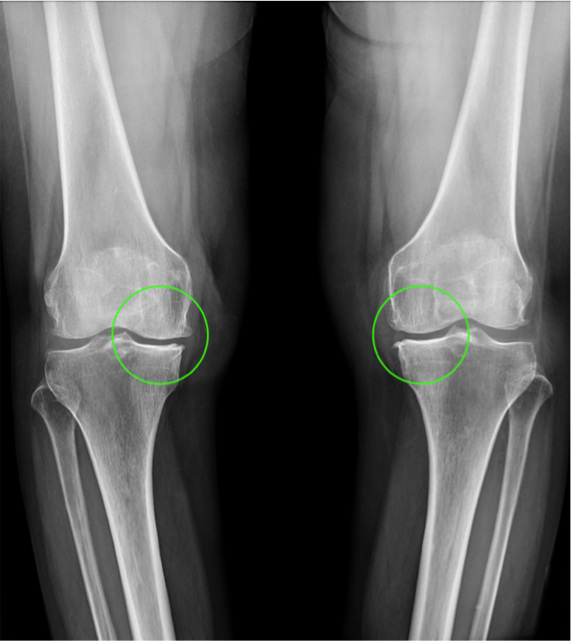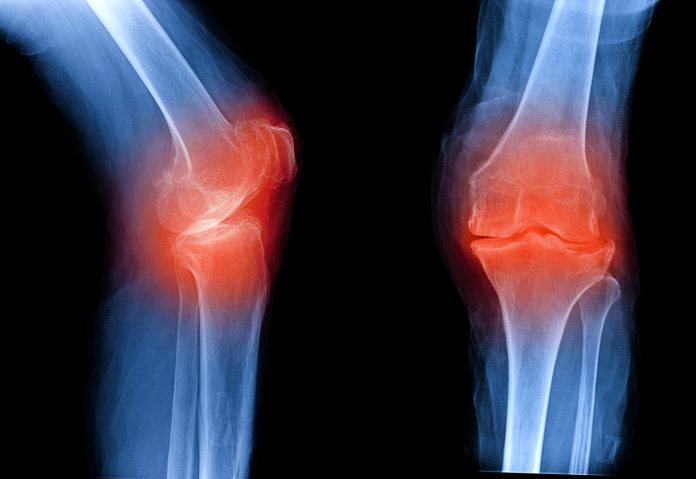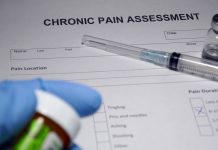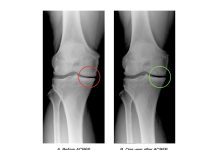A patient with knee osteoarthritis (OA) provides a testimonial for “wonder” therapy that has her relieved painful symptoms
Ms Huang (63 years old) felt aches and pains here and there, which she simply brushed aside as symptoms of getting old until one day, her knees hurt so much that she couldn’t bear it anymore. Only when her mobility diminished, and she couldn’t stand up for very long, did she realise the gravity of her problem and sought medical advice.
She first tried a community hospital near her home and was told that the cartilage in both of her knee capsules was severely worn and she ought to have double knee replacements. Ms Huang, however, believes that knee replacements should be used only as a last resort. After all, once replaced, natural knees are forever gone; there is no way to undo the knee replacement surgery. She couldn’t help wondering about a scenario where her knee replacements went wrong. Then she would be without any recourse, and she would be left to suffer knee pain forever.
As she hesitated about knee replacements, her doctor suggested painkillers and muscle relaxants to ease her knee pain. Medications indeed provided temporary relief, but her knee pain would return as soon as she stopped taking the drugs. Furthermore, Ms. Huang’s kidneys are not fully functional, so she is aware of the huge negative impact of prolonged medication.
Arthroscopic cartilage regeneration facilitating procedure
Huang learned that one of her friends had been treated with the ACRFP (arthroscopic cartilage regeneration facilitating procedure) for her knee OA. Upon hearing about Huang’s suffering, the friend shared with Huang her ACRFP experience: ACRFP is a minimally invasive arthroscopic operation to remove the medial plica–an eventual cause of knee OA–and remove the detrimental factors from the knee capsule to make it a more hospitable environment in which the damaged and worn cartilage can grow back. She was discharged from the hospital in three days, and, at home, she strictly followed the schedule to do the three rehabilitation exercises that the doctor had prescribed. Now she doesn’t even need pain medications.
The friend’s information greatly boosted Huang’s confidence in ACRFP. In 2010, Huang attended a workshop in which Dr Lyu explained the cause of knee OA and his novel treatment for it. With this added knowledge, Huang made a clinical appointment to see Dr Lyu, who diagnosed stage III OA in Huang’s knees, and both her knees were suitable candidates for receiving the ACRFP treatment. Huang decided on the spot to have the ACRFP on both knees concurrently. After the surgery, Huang diligently did the three rehabilitation exercises every day that the medical team had prescribed, and she had returned for follow-up visits as scheduled. Five years after the surgery, her X-rays showed that the cartilage in both her knees had shown signs of re-growing (Figures A and B).


More than two years after the surgery, Huang had maintained her daily routine of the same three prescribed rehab exercises, which have helped her stay pain-free without taking any medication or supplements. She pointed out that the improvement in her quality of life has made her ACRFP surgery all worthwhile. She has even been able to join tour groups to visit different countries.
“When my knee OA was flaring up, I could not move freely and I couldn’t even go grocery shopping; I had no quality of life to speak of back then,” Ms. Huang said. “Now I can go anywhere and do anything I want. Everything is back to normal.” She has now travelled around often, and she is not at all worried about using squat toilets. “However, I do squat down or stand up slowly because the knees must not be subjected to abrupt pressure. Likewise, for going up or down stairs,” she added.
She is now confident about how to care for the knees after the ACRFP.
What is ACRFP?
The ACRFP (arthroscopic cartilage regeneration facilitating procedure) is an integrated, comprehensive, and novel arthroscopic surgery that aims to remove all existing risk factors of knee OA from the knee, hence eliminating knee pains and making the knee a more hospitable place for the cartilage inside to regenerate.(1-3) The ACRFP (1) eradicates the medial abrasion phenomenon and inflamed synovium and capsule, (2) decompresses the patello-femoral joint, (3) restores soft tissue balance around the patella, (4) removes other known risk factors (synovitis, meniscus tears and chondral flaps) of knee OA, and (5) consequently improves the environment in the knee to be more hospitable to cartilage regeneration. Therefore, knee OA patients who receive ACRFP are much more likely to avoid knee replacement.
References
- Lyu SR, Hsu CC, Lin CW. Arthroscopic cartilage regeneration facilitating procedure for osteoarthritic knee. BMC Musculoskelet Disord. 2012 Nov 21;13:226. doi: 10.1186/1471-2474-13-226. PMID: 23171074; PMCID: PMC3583133.
- Lyu SR, Hsu CC, Hung JP, Chou LC, Chen YR, Lin CW. Arthroscopic cartilage regeneration facilitating procedure: A decompressing arthroplasty for knee osteoarthritis. Medicine (Baltimore). 2022 Sep 30;101(39):e30895. doi: 10.1097/MD.0000000000030895. PMID: 36181017; PMCID: PMC9524980.
- Lyu SR, Hsu CC, Hung JP, Chou LC. Arthroscopic cartilage regeneration facilitating procedure can modify the clinical course of knee osteoarthritis. J Orthop Surg (Hong Kong). 2023 May-Aug;31(2):10225536231180331. doi: 10.1177/10225536231180331. PMID: 37395209.








